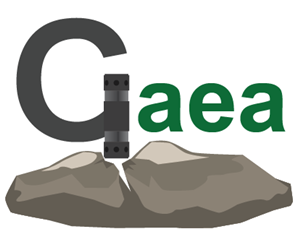What types of carbide teeth are there for down-the-hole drill bits?
Ball teeth
Shape characteristics: Ball teeth are a common type of carbide teeth in down-the-hole drill bits. Its shape is similar to a sphere and its surface is smooth. This shape makes the contact point of the ball teeth smaller when they come into contact with the rock, so that a larger pressure can be generated under the same pressure. For example, when drilling very hard granite, the ball teeth can break the rock more effectively with its smaller contact area.
Application scenarios: Mainly suitable for drilling hard and dense rocks, such as quartzite, basalt, etc. In mining, for some high-hardness ores, the ball-toothed down-the-hole drill bit can play a good crushing effect and ensure the smooth progress of drilling.

Flake teeth
Shape characteristics: The shape of the flake teeth is flake-shaped and its cutting edge is relatively sharp. During the working process, the flake teeth can generate a large shear force on the rock. This shape makes it cut and peel the rock through the cutting edge instead of breaking the rock by points like the ball teeth when breaking the rock.
Application scenarios: Suitable for drilling medium-hard rocks, such as limestone, sandstone, etc. In construction, when pile holes or anchor holes need to be drilled in these rock formations, the plate-tooth type down-the-hole drill bit is a more suitable choice. It can effectively cut rocks and improve drilling efficiency.
Column teeth
Shape characteristics: The column teeth are cylindrical, and both the sides and the top can participate in crushing rocks. The column teeth have relatively high strength and are not easy to break when subjected to large impact forces. Moreover, its wear is relatively uniform, and its service life may be longer.
Application scenarios: Commonly used in some drilling operations that require high wear resistance of the drill bit. When drilling continuously for a long time or drilling into rocks with high hardness but uneven texture, the column teeth can better adapt to complex rock conditions and ensure the stability of drilling and the durability of the drill bit.
Wedge teeth
Shape characteristics: The shape of the wedge teeth is similar to a wedge, with a sharp head and an inclined side. This shape enables the wedge teeth to use the sharp part of the head to first insert into the rock when drilling into the rock, and then crush the rock by squeezing the side. The crushing method of the wedge teeth combines the effects of puncture and extrusion.
Application scenario: When drilling in some rocks with layered structures or high brittleness, the wedge teeth can play a good crushing effect. For example, when drilling in shale formations, the wedge teeth can be inserted along the layering direction of the rock and crush the rock, thereby improving the drilling efficiency.





